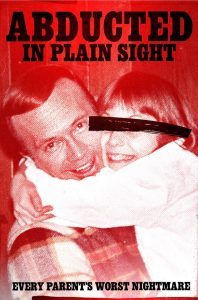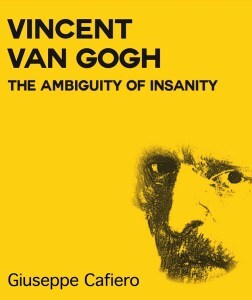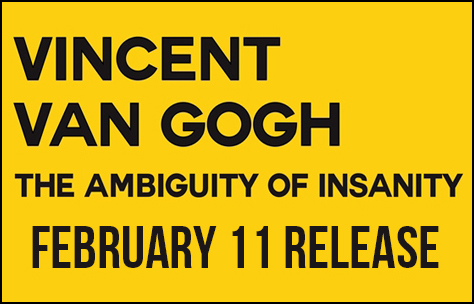Majanka Verstraete's Blog, page 17
February 17, 2019
Author Interview and Giveaway The Sacred Artifact
How do you plot novels? Do you outline?
For my middle grade fantasy novel, “The Sacred Artifact,” I did a basic outline of the whole novel with plenty of wiggle room for changes built in. I wanted to have the freedom to incorporate new interesting scenes as they developed during the writing process. If a chapter has a lot of complexity to it, I’ll do more careful outlining to make sure the pacing works, but generally my outlines are quite sparse – just the skeletal structure of the story.
Do you write in one genre, or in many different genres?
I’ve written books in a few genres. My first book, “The Enchanted River Race,” is an early chapter book. My second book, “The Boy Who Couldn’t Cry Wolf,” is a picture book. My newest books are part of a middle grade series called the Young Alchemist series. I am currently working on a young adult novel, which is a whole new experience for me. I’m having a lot of fun so far! I really enjoy the challenge of learning the intricacies of a new genre.
What is your favorite part of the writing process?
I like different aspects of each step of the writing process. For the brainstorming phase, I love the energy of coming up with new ideas. When I am ironing out the first draft, I love seeing the ideas materialize into an actual story. Finally, for the editing process, I enjoy seeing the text get polished into its final form.
What is your dream as an author?
I just want to keep writing books that readers enjoy and I’m proud of. Of course, writing a NY Times bestseller would be an incredible feeling, and I would love to have that experience. But at the end of the day, I just want to enjoy the process and share my work with the readers. I love the challenge of improving as a writer as well. When it stops being fun, I’ll stop doing it, but I don’t see that ever happening.
What would you like your readers to take away from your novels?
I want readers to have a positive experience when reading my books. This can mean a variety of things, from getting inspired by the story or just using it as an escape. Or perhaps they relate to a character and find a sense of comfort in knowing that there are other people like them. Maybe they read a Caldric Blackwell book and decide to write a story of their own – that’s great, too. Even if they just read my books and think it’s a fun way to pass the time, I’m happy.
What are your strong points when it comes to writing? What are your weak points?
I’m of the belief that a writer should be continuously improving in all aspects of his or her writing, from the plot to the characters to the voice. That said, I feel my strength is in crafting an intriguing plot, which is something I really was able to explore in my new middle grade fantasy, “The Sacred Artifact.” Something I am trying to work on is really bringing the characters to life. I’ll read authors like Steinbeck or Hemingway and see I have so far to go … but it’s great because it inspires me. I don’t ever want to get comfortable in my writing – I always want to have an eye toward improvement.
Are you working on something at the moment?
Yes! I’m currently working on a young adult novel set in New Orleans. It draws from a lot of experiences I had while living there. It’s quite different from my other work in that there isn’t a fantasy element, but it allows me to step back from world-building and focus on the plot and characters. I’m having a ton of fun writing it, but also grappling with the difficulty of wading into something completely new to me. I can’t say much more about the project now, but I’ll be sure to keep the readers posted on my progress!
About the Book
 Title: The Sacred Artifacts
Title: The Sacred Artifacts
Author: Caldric Blackwell
Genre: Middle Grade
Determined to uncover the secrets of a mysterious artifact, fourteen-year-old alchemy student Craig Pike and his teacher, Cornelius, journey to the birthplace of alchemy to seek the advice of a wise, ancient alchemist named Quintus. With the help of a witty archer, Audrey Clife, they trek across dangerous lands, compete in a cutthroat tournament, and reunite with old friends. They soon find out the artifact is more powerful than anticipated, and they aren’t the only ones seeking to discover its secrets….
Author Bio
 Children’s book author Caldric Blackwell first realized he loved reading when he read about a bunch of people (with single-syllable names) and their pets (also with single-syllable names) in kindergarten. From that point on, he was nearly inseparable from books.
Children’s book author Caldric Blackwell first realized he loved reading when he read about a bunch of people (with single-syllable names) and their pets (also with single-syllable names) in kindergarten. From that point on, he was nearly inseparable from books.
His interest in reading culminated in him studying English at the University of California, Santa Barbara. Exposure to a host of great authors inspired him to begin writing fiction and started his journey to becoming a children’s book author. Although he began writing short stories for adults, he was drawn to the whimsical, imaginative nature of children’s literature and began working on his first book for children.
Blackwell’s debut work is an adventure-filled early chapter book, titled “The Enchanted River Race,” which follows a team of children as they compete in a river race. His next release is the beautifully illustrated picture book “The Boy Who Couldn’t Cry Wolf,” which revolves around a young werewolf who is self-conscious about his inability to howl.
His most recent work is the two-part Young Alchemist series, which is targeted at a middle grade audience. The first book in the series, “The Missing Alchemist,” follows alchemy student Craig Pike and clever archer Audrey Clife as they travel across mysterious lands and battle other-worldly creatures in a quest to rescue a famous alchemist. The second book in the series, “The Sacred Artifact,” centers on Craig’s attempt to uncover the secrets of a mysterious artifact, which entails journeying to the birthplace of alchemy to seek the advice of a mysterious, ancient alchemist.
Outside of reading and writing, children’s book author Caldric Blackwell enjoys jiu jitsu, gardening, and playing bass and guitar. He currently resides in Southern California.
Links
February 15, 2019
TV Series Review: Abducted in Plain Sight
 It doesn’t happen often that when I watch a TV Series, I want to grab my screen and smash it to pieces. I can watch gruesome accounts of murders, and barely blink. I can see characters make the stupidest mistakes in the history of mankind, and just shrug it off. But what is so disturbing about the choices made by all the people involved in Abducted in Plain Sight is that this is real. This happened to real people. It’s not fiction, it’s reality, and that’s what got to me the most. Netflix advertised this documentary as being “stranger than fiction” and indeed, it is far stranger than anything fiction could ever imagine; and that’s what makes it so harrowing.
It doesn’t happen often that when I watch a TV Series, I want to grab my screen and smash it to pieces. I can watch gruesome accounts of murders, and barely blink. I can see characters make the stupidest mistakes in the history of mankind, and just shrug it off. But what is so disturbing about the choices made by all the people involved in Abducted in Plain Sight is that this is real. This happened to real people. It’s not fiction, it’s reality, and that’s what got to me the most. Netflix advertised this documentary as being “stranger than fiction” and indeed, it is far stranger than anything fiction could ever imagine; and that’s what makes it so harrowing.
The Broberg family is an average, normal family. They go to church every Sundays, they love spending time with each other, and yes, maybe they’re a bit naive. Or, very naive as becomes clear later. But at the start, they’re a pretty normal family. Three children, Mom and Dad. It’s the encounter with their neighbors, in particular Robert Berchtold, that will change their entire lives. The Brobergs and Berchtolds become friends very fast: both families have children in the same age range, and Robert Berchtold, nicknamed “B” by the Brobergs, is almost like a second father to Jan and her siblings.
But “B”‘s interest in the Brobergs is far from innocent. He manipulates himself a way into their lives: by urging the father of the family, Bob, to perform a homosexual act on him, which Bob is so ashamed about that he would do anything not to have his secret revealed. B manipulates Mary Ann, the mother of the family even more, starting an affair with her, and trying to convince her he’s in love with her. But in reality, the one person B is after is neither Bob nor Mary Ann: it’s their daughter, Jan.
B first kidnaps (yes, I said “first”) Jan in 1974 while supposedly going horseback riding with her. He keeps her with him for several weeks, making her listen to tapes recorded by aliens that tell her she should have sex with B in order to produce a child, and that child will somehow save the world. It all sounds very out of this world, but for a gullible child like Jan is, the threats of these aliens to kill her family if she doesn’t comply sound all too real. B even tries to marry Jan in Mexico, where one can legally be wed as of the age of 12.
Stunningly, the Brobergs don’t file a missing person’s report right away. In fact, it takes several days – they’re so brainwashed by B that they believe this is all just a big misunderstanding and that he’ll bring back their little girl safe and sound. Even after police get involved, the Brobergs don’t want to believe B did anything wrong. This is disturbing, it’s even disturbing just to hear Bob and Mary Ann repeat this out loud in front of the camera. B, who up to that point had already been sleeping in bed with Jan for several nights a week – because his psychologist had told him this would help him get over abuse he suffered as a child, and the Brobergs had (although they found the request strange) allowed him to do this. It’s baffling. It’s enough to make you want to hurl your remote control at the TV, if not worse.
B is eventually arrested in Mexico for the kidnapping of Jan who, by this point, is so brainwashed she believes she has to free him, and she’s not allowed to tell anyone about the threats the aliens made and she complies, fearing if she doesn’t, the aliens will hurt her family. The Brobergs eventually retract their charges, another mind-boggling choice by them that is inspired mostly by naivety, but a naivety that has disastrous consequences.
Things get even worse when B keeps stalking Jan, and her parents eventually let him see Jan again for fear of retaliation if they don’t comply. They basically allow the pedophile to presume his relationship with his victim, even eventually kidnapping her a second time. The story is so out of this world that I can’t even bring myself to write down the rest of it – just go watch it and judge for yourself.
Watching the documentary was frustrating most of all because of the Broberg’s naivety. Although, hindsight is 20/20; I can understand them not seeing the signs before the first kidnapping (as Bob put it during the documentary, no one even knew what a pedophile was back in those days), but some of the behaviour afterwards is just… Well, it’s heart-breaking, really. Jan deserved better. From her parents, from the community, even from the police. I think it’s brave of the parents that they wanted to participate in this documentary, and you can clearly see the hurt on their faces and the guilt, but one of their daughters summed it up quite well when talking about the ordeal Jan went through after the first kidnapping. The parents didn’t press for more details, they were too afraid to know. And that’s what they did this entire time: bury their heads in the sand.
If it was fiction, I would’ve complained how far-fetched the story was, and how unbelievable it was that people could be this gullible. But it’s not fiction, it’s facts, and that just makes it sad and heart-breaking and incredibly difficult to watch.
February 11, 2019
Book Tour The Sign Of The Serpent
The book tour for The Sign Of The Serpent launches today, and runs until February 15. Even better, you can win an awesome Alex and Ani bracelet during the tour and a free iBook copy of The Sign Of The Serpent, the second book in The Adventures of Marisol Holmes series!
Visit the blogs participating in the tour:
February 11th
–Literary Flits >> Guest post
–Oh Hey! Books. >> Interview
February 12th
–Archaeolibrarian – I Dig Good Books! >> Review
–Character Madness and Musings >> Guest post
–Incidental Inspiration >> Review
February 13th
–Am Kinda Busy Reading >> Review
–So Many Books, So Little Time >> Excerpt
–The Phantom Paragrapher >> Review
–Rockin’ Book Reviews >> Review
February 14th
–Finding Magic In Books >> Interview
–Book Briefs >> Review
–Jazzy Book Reviews >> Review
February 15th
–Smada’s Book Smack >> Excerpt
–Cranky TBC >> Review
–The Avid Reader >> Review
February 10, 2019
Guest Blog Post: Why van Gogh’s Death Still Remains Controversial to this Day
Why van Gogh’s Death Still Remains Controversial to this Day
By Giuseppe Cafiero
 On the evening of July 27th, 1890, Vincent van Gogh walked into the Auberge Ravoux, the hostel in the French village of Auvers-sur-Oise where he had been lodging , clutching his stomach.
On the evening of July 27th, 1890, Vincent van Gogh walked into the Auberge Ravoux, the hostel in the French village of Auvers-sur-Oise where he had been lodging , clutching his stomach.
Clearly in distress, he managed to get back to his room, where he collapsed in bed. When the inn-keeper came to check on him, Vincent showed him a chest wound and admitted that he had tried to kill himself with a revolver, lent him by the innkeeper Ravoux, earlier that day. His physician, Doctor Gachet, was called for but upon seeing the injury, declared it to be a hopeless case. His diagnosis proved correct, with van Gogh dying in the early hours of July 29th.
Since that time there has been a great dispute surrounding the circumstances of his death. Largely, this revolves around whether it was an intentional, or unintentional, act. Did he truly mean to kill himself, or was it a momentary lapse of judgement that had a tragic ending?
It is certainly true that in the months leading up to his death, van Gogh had been in a much more positive state of mind than when he had left the asylum in nearby Saint-Rém, as his letters to his brother, Theo, attest.
 However, it is also clear from that celebrated correspondence that, in the days preceding the shooting, Vincent’s fragile mental health had, once again, been deteriorating. Though this is not proof that he intended to commit suicide, there are two other letters dispatched by his brother Theo – who attended his brother on his deathbed – that provide as much certainty as we can ever hope for.
However, it is also clear from that celebrated correspondence that, in the days preceding the shooting, Vincent’s fragile mental health had, once again, been deteriorating. Though this is not proof that he intended to commit suicide, there are two other letters dispatched by his brother Theo – who attended his brother on his deathbed – that provide as much certainty as we can ever hope for.
In a letter to his sister Lies, Theo recounts that Vincent, “himself wanted to die. When I sat at his bedside and said that we would try to get him better and that we hoped that he would then be spared this kind of despair, he said, ‘La tristesse durera toujours’ (The sadness will last forever). I understood what he wanted to say with those words.”
Theo’s wife, Johanna, also recalls in her memoir of December 1913 a letter from Theo that was dispatched after his arrival at the Auberge Ravoux: “Poor fellow, very little happiness fell to his share, and no illusions are left him. The burden grows too heavy at times, he feels so alone.” Theo followed this up with the following letter to Jo when his brother had died: “One of his last words was, ‘I wish I could pass away like this,’ and his wish was fulfilled. A few moments and all was over. He had found the rest he could not find on earth.”
Perhaps the final word should go to Adeline Ravoux, the innkeeper’s daughter. She was 13 at the time that Vincent died but clearly recalled the incidents of July 1890 in an account written when she was 76 years old. She recounts that on the morning of July 28th, two gendarmes visited Vincent to question him about the attempted suicide. She reports that in answer, he replied: “My body is mine and I am free to do what I want with it. Do not accuse anybody, it is I that wished to commit suicide.”
Vincent Van Gogh: the Ambiguity of Insanity by Giuseppe Cafiero is out now as an audiobook on Amazon, Audible.com and iTunes
About the Book
 Title: Vincent Van Gogh: The Ambiguity of Insanity
Title: Vincent Van Gogh: The Ambiguity of Insanity
Author: Giuseppe Cafiero
An abrasive itinerary of the presence of women, the landscape and obsession. Such are the internal paradigms that went through the compelling life of the Post-Impressionist painter Vincent van Gogh.
Not flesh and blood women, but the woman as a guide: Mrs. Jones, the woman as a mother; Kee Vos; Christine Hoornik of Siena; Margot Begemann. The Portrait-women such as Augustine Roulin and Madame Ginoux. And then the backgrounds, endless, unforgettable in this genius’s works: Isleworth, Amsterdam, le Borinage, Arles, St. Remy, Auvers-sur-Oise, where Vincent van Gogh spent his life trying to capture the colors, the atmosphere, the light.
The pain of finitude and his obsession with achieving redemption through art, with intimate and stormy religiosity, with brotherly love, with the French noon sun and, in short, with death. A hard-working and unwavering life where art interacted, in a painful gesture, with the iron will of a hand that never lost its way.
The life of a beloved and devoted man, silenced by the anguish and despair of creation, who could only find peacefulness when he found his own death.
Vincent Van Gogh: the Ambiguity of Insanity is a fictionalized biography and gripping novel of the life of the Nineteenth-Century Dutch painter Vincent van Gogh. The author, Giuseppe Cafiero, draws a psychological portrait of the Post-Impressionist painter through the women that marked his life and the cities in which he lived.
TV Series Review: Sharp Objects
 Sharp Objects is, hands down, one of the best series I’ve ever seen on TV. I can’t believe I missed it when it was first released, and I’ve only picked up on it now when scrolling through the offerings of HBO out of sheer boredom on a lazy Friday evening. The premise sounded intriguing, and the cover image looked a little off, reminding me of gothic horror, my all-time favorite genre, so I hit the “play” button. Eight-hours of binge-watching the series whenever I could, and I was at the final scenes, engulfed in a story so enthralling, so deranged that it can only be compared to that other gem of a series, The Haunting of Hill House, that was also released last year.
Sharp Objects is, hands down, one of the best series I’ve ever seen on TV. I can’t believe I missed it when it was first released, and I’ve only picked up on it now when scrolling through the offerings of HBO out of sheer boredom on a lazy Friday evening. The premise sounded intriguing, and the cover image looked a little off, reminding me of gothic horror, my all-time favorite genre, so I hit the “play” button. Eight-hours of binge-watching the series whenever I could, and I was at the final scenes, engulfed in a story so enthralling, so deranged that it can only be compared to that other gem of a series, The Haunting of Hill House, that was also released last year.
But whereas the latter is more horror-focused, the horror moments in Sharp Objects are rarer. Still, when they happen, they have a profound impact. Pictures of the heavily-mutilated corpses of young girls randomly appearing after zooming in on the heroine’s face, showing us she is thinking about these horrific events, it certainly leaves a mark. Or when the main character’s deceased sister shows up with harrowing messages, or sometimes just pops up sitting on the couch in her parental home, doing absolutely nothing except creating more tension and increasing the creep-factor.
I’ve just finished watching and I already want to watch it again to uncover what I’ve missed – that’s how good this series is.
Now, on to the plot. Camille Preaker is a reporter who moves to St. Louis in an attempt to get as far away from her home town, the claustrophobically small town of Wind Gap. The viewer uncovers soon enough that Camille is not well: that something in her past must’ve scarred her. The only question remains as to what it is that scarred her so much that she’s now a broken, barely functioning individual. Then, her editor suggests for her to go back to Wind Gap, back to her past, and this because of a recent murder in the town, and a missing person’s case, both involving young girls. Camille is more than a little reluctant, but eventually complies and heads back to Wind Gap, on a trip down memory lane.
Soon after, we meet Camille’s mother, Adora, who resembles every wicked stepmother in every gothic horror novel you’ve ever read. Cold, somewhat out of her mind, overdramatizing everything, and still suffering from the loss of her precious daughter Marian years ago. Now we uncover part of what is haunting Camille: the death of her sister, Marian, who she clearly was close with, as the viewer learns through various flashbacks. After the weirdest “welcome home” in history, Adora invites Camille to stay with her while she’s in Wind Gap, in the sprawling mansion that used to be Camille’s family home. After going up on the strangest staircase I’ve ever seen (seriously, was no one else wondering why they didn’t just open up the right side too, so Camille’s room could be immediately accessed as opposed to taking that enormous detour?) Camille goes back into her old childhood room, and becomes plagued with visions of Marian.
Then, there’s also Amma, Camille’s younger stepsister, who is immediately “too” fond of Camille, awkwardly so. It soon turns out there’s more to Amma than meets the eye, and she’s far from the dressed-up doll her mother wants her to be. Amma is somewhat of a contradiction: one moment she is dressed like a ten-year-old playing with her dollhouse and making a fuss when the colors of a rug don’t match, the next moment she’s rollerskating around town with two other girls, dressed provocatively, hanging around with boys and even doing drugs.
There’s a sense of desolation, a sense of something being off, but you can’t quite put your finger on what it is yet. Camille roams around town trying to solve the murders – as it soon turns out, victim number two was murdered as well, and her body was staged in the middle of town rather than on a remote location. Camille is a bad reporter, there’s no way around it. She runs into several conflicts of interests, barely noticing them, she even walks into the bedroom of one of the murdered girls, uninvited, and then writes about it. She drinks all day and night, hiding her pain behind bottles of liquor, and she sleeps around. She’s wounded; it’s easy to see, easy to feel for her, but sometimes you just want her to man up and take control of the situation.
Especially toward the end. I don’t want to give out spoilers, but for God’s sake, I wished Camille wasn’t such a pushover then. Because for all her bravado, when it comes to the relationship with her mother, Camille is a pushover. She doesn’t fight, she doesn’t rebel, she doesn’t attack: she lets things happen to her. And that’s basically the story of Camille’s life: she’s let things happen to her, and some of those things were absolutely horrible, and some she may never recover from. But she never transforms into the hero viewers may want her to be: even when she needed to take action the most, even when she could have triumphed over her mother after all this time, she doesn’t. And perhaps this is more realistic, perhaps a victim doesn’t always end up strong enough to face what happened to them head-on, but it’s sad to see that Camille’s wounds have crippled her to this point.
From the get-go, the story portrays females in various different lights. The detectives conclude soon enough that the killer could not be a woman because of the ferocity of the crimes, and the series then continues on to show just how vicious women can be. The men play only supporting roles here: even the detectives on the case, both men, don’t come anywhere near closing the case. They’re deluded from the start, focused on an idea that is absurd although they don’t see it themselves. Alan, Adora’s husband, is the prime example of this: he does whatever Adora says, whenever she says it.
The focus is on the women here: on Camille, scarred by the past; on Adora, a controverse mix of caring mother and hurtful serpent whispering hateful words to Camille such as “I never loved you”; and Amma who is unbalanced, one moment a doll, one moment a real girl. It’s these relationships, these characters, that carry the story. It’s not even about the murdered girls or the murders as such: it’s a gothic horror about a family with secrets hidden in the dark, about guilt haunting one’s conscience, about princesses locked away in towers of mansions.
And even though I somewhat predicted the ending, I was still amazed by its execution, by the sheer force of it and the impact it had on me.
It’s dark, it’s depressing, it reminds you of just how wicked people can be, but at the same time, it’s magnificent, it digs into your skin, it doesn’t let you go. Once you’ve started watching, you won’t be able to stop.
February 3, 2019
The Sign Of The Serpent Launches on February 12
 On February 12, The Sign of The Serpent, the second book in The Adventures of Marisol Holmes series, launches. I couldn’t be more excited! I can’t wait to share thisb ook with you. I enjoyed writing it possibly even more than the first book in the series, and for people who enjoyed the first book, I’m certain the second book will be lots of fun too.
On February 12, The Sign of The Serpent, the second book in The Adventures of Marisol Holmes series, launches. I couldn’t be more excited! I can’t wait to share thisb ook with you. I enjoyed writing it possibly even more than the first book in the series, and for people who enjoyed the first book, I’m certain the second book will be lots of fun too.
Preorder the book now while you can so you can read it as soon as it’s released!
Next week, on February 11, the book tour for The Sign of The Serpent also launches on Xpresso Book Tours. Please check out the book tour page here.
February 2, 2019
Monthly Goals February 2019
 I didn’t do too bad on my January goals, so I’m keeping up the process and decided to set some goals for myself this February. I had intended to post this yesterday, but as usual, life got in the way…So I hope I do better this month!
I didn’t do too bad on my January goals, so I’m keeping up the process and decided to set some goals for myself this February. I had intended to post this yesterday, but as usual, life got in the way…So I hope I do better this month!
Here are my February goals:
Proofread The Sign of The Serpent prior to launch in late February.
Write a short story per week (total: 0/4).
Finish rewrite of Allegro Academy Book #1: Symphony of the Departed.
Figure out what to do with my Angel of Death Series.
Write two blog posts on my author blog per week (total: 1/8).
Post at least once a week on my Sims4 Stories blog (total: 0/4).
Write five reviews for I Heart Reading (total: 0/5).
Write another five reviews for I Heart Reading (total: 0/5).
Review three books for Ind’Tale Magazine (total: 0/3).
Write first draft of YA Warlock Book #1 (total: 0/60k words).
Work on the sequel of Ghost Slayer (total: 0/60k words).
Related to the two previous goals, write 2k words a day.
Come up with story idea for box set I’m participating in.
Prepare for the book tour of The Sign of The Serpent.
Launch The Sign of The Serpent end of February.
What are your goals for this month?
January 29, 2019
TV Series Review: Conversations With a Killer: The Ted Bundy Tapes
 Everyone who’s ever been addicted to crime shows, be they true crime or fictional, has heard of the infamous serial killer Ted Bundy. Stalking young women in the 1970s, charming and alluring, a man whose friends and family strongly believed was innocent, Ted Bundy is still somewhat of an enigma. He studied psychology, was on the verge of finishing law school when he was first arrested and charged with kidnapping. Police believe he killed dozens of women – Ted himself confessed to about thirty murders, the day before he was sentenced to death on the electric chair, after proclaiming his innocence for a decade while on death row.
Everyone who’s ever been addicted to crime shows, be they true crime or fictional, has heard of the infamous serial killer Ted Bundy. Stalking young women in the 1970s, charming and alluring, a man whose friends and family strongly believed was innocent, Ted Bundy is still somewhat of an enigma. He studied psychology, was on the verge of finishing law school when he was first arrested and charged with kidnapping. Police believe he killed dozens of women – Ted himself confessed to about thirty murders, the day before he was sentenced to death on the electric chair, after proclaiming his innocence for a decade while on death row.
But who was Ted Bundy really? A man with a dark side he managed to hide quite well from his friends and family? A man who was controlled by his own urges, ruining his own escape by slaughtering two young girls and nearly killing two other young girls in a campus sorority home? Or, a man who was above all, cunning and manipulative as he managed to escape from police officers not once, but twice? A man who was complimented by the judge who sentenced him to death – a feat I’ve certainly never seen repeated before or after.
The new Netflix documentary, Conversations With a Killer: The Ted Bundy Tapes doesn’t really answer any of those questions and truthfully, I don’t think anyone, perhaps not even Bundy himself, could’ve answered them.
Starting with Bundy telling the viewers about his early childhood, painting quite an idyllic picture that is contradicted by a childhood friend of his, the documentary sketches a terrifying picture: a picture of a boy who was no different than anyone else, besides perhaps for the fact he never knew his father, a fact that Bundy clearly downplays and his psychiatrist is intent on making a great deal about. Was it a great deal for Bundy? The man is so mysterious that even that can’t be uncovered. Was this what drove him to kill young women? It seems far-stretched, because Bundy, if anything, had a great relationship with his mother which might’ve compensated for him growing up not knowing who his real father was.
Another peculiarity about Bundy is that he’s social. He fits in. He has girlfriends, two of them while he was on his murder spree even, killing girls who sometimes looked a lot like them. It makes one wonder how he can be romantic and caring toward one female and so destructive and violent toward another female in the next month. Almost like two different people exist inside him: Bundy, the social, kind, caring person, and Bundy, the ruthless, brutal murderer. But how can two such personalities exist in one individual?
Bundy didn’t just open people’s eyes to the fact that serial killers exist. That innocent young women can be killed for seemingly no reason except another person’s pleasure and satisfaction. And it also played an important role in getting the different county police forces in the United States to work cross-border, to combine their knowledge, a much needed skill to capture elusive killers who murdered people they didn’t even know. But more than that, even, Bundy opened our eyes to the fact that serial killers aren’t necessarily creepy loners hanging out in abandoned basements or derelict buildings.
Serial killers can be charming. They can be kind. They can have friends and families. This doesn’t mean they can’t also be monsters.
The Netflix advertisements about this show warned viewers not to watch it alone, focusing on the shock effect. The shock for me, however, didn’t come from Bundy, it didn’t stem from how he could seemingly so easily escape from prison twice, how he could stalk women across multiple states and dump their bodies carelessly in forests along the mountains for years without being caught. That is quite shocking in itself, but the way Bundy kept on playing everyone: the judge at his trial, his own defense team, the jurors, heck even me because sometimes even I began to doubt if he was guilty or not.
And that’s the true horror, isn’t it? That Bundy is so convincing in his lies, so manipulative, that anyone could fall for it. Anyone.
But at the same time, I didn’t always disagree with Bundy. When he was awaiting his death and heard the people cheer outside, when he commented on that – according to the journalist who testified to this – and said they called him a monster but they weren’t much better, that really hit home. Because it was in a way, almost a mirror for what Bundy had done, and it showed quite a pitiful side of human kind. It’s one thing to want a person like Bundy to die. I’m firmly against the death penalty, but I can understand wanting a serial murderer to die. But to sell t-shirts outside prison on the day of his scheduled death? To chase after the hearse and shout cruel things?
Bundy had a family. A mother who clearly loved him deeply. He had a wife and daughter, an innocent little girl who certainly didn’t deserve to have a serial murderer as her father, and who could not help the horrible crimes he had committed. And just out of respect for those people, I thought it was a disgusting display of almost non-humanity, of cruelty.
At the same time, it feels like such a waste. Yes, Bundy might’ve deserved to die. Yes, he might’ve been a monster. But before his death, he was willing to trade information, he was willing to tell the locations of the bodies of the women he’d supposedly murdered who had never been found. Information that could’ve been vital for those families who obviously wanted to find back their loved ones. But it seemed vengeance won that day, vengeance won over getting those people finally reunited with their loved ones.
Bundy allegedly helped in investigations regarding other serial killers and was, apparently and perhaps not-so-shockingly, very good at it. Rather than kill people, he might’ve ended up saving some lives if he’d been left to rot in jail rather than be put on that electric chair, in what would perhaps be an ironic twist of fate. Sometimes you need a messed-up individual to be able to track down another messed-up individual.
The series didn’t tell me much that I didn’t already know regarding this infamous serial killer, but the format was nicely done, and the interviews seemed mostly genuine. Ted Bundy may have perished thirty years ago, but his legacy lives on to this day.
January 24, 2019
TV Series Review: You
 I never expected Netflix would drop so many chilling thrillers around the Christmas season, but since I’m a huge fan of the genre, I say: the more, the merrier. “You” is the story of boy meets girl, boy falls in love with girl and woes her, and girl eventually falls in love with boy. Except that in this case, the boy is a stalker, possibly a psychopath, and maybe even worse.
I never expected Netflix would drop so many chilling thrillers around the Christmas season, but since I’m a huge fan of the genre, I say: the more, the merrier. “You” is the story of boy meets girl, boy falls in love with girl and woes her, and girl eventually falls in love with boy. Except that in this case, the boy is a stalker, possibly a psychopath, and maybe even worse.
Joe is a bookstore manager who meets a girl in his bookstore one day, Guinevere Beck, and seems to fall head over heels from her. The story is told mostly from Joe’s POV, and we can even hear Joe’s mental voice, which is a cool addition and works rather well. Joe is interested in Beck and determined to find out more about her, which entails that he follows her around all day without her knowing, stalks her on social media, and eventually steals her phone in order to find out everything there is to know about her.
Then, his delusions get even more out of control as he starts to imagine the obstacles standing in the way of him and Beck being together: Beck’s ex-boyfriend who is still waltzing in and out of her life, Benji, being one of them. Joe starts to believe it’s up to him to better Beck’s life, even if that means getting rid of some of these obstacles…
What “You” is exceptionally good at, is blurring the lines. As viewer, you start out by thinking Joe is maybe a little stalkerish/obsessive, but he seems otherwise as a nice guy: he helps his neighbor’s kid, Paco, whose stepfather is often abusive to his mother, he’s always perfectly charming,… But at the same time, his obsessive nature is creepy. Still, you start hoping this might go away once he actually gets the object of his obsession: Beck. And when they’re together, the series gets the vibe of a rom-com. They’re actualloy quite good together. Joe is a doting boyfriend who helps Beck with her writing career. Beck is better when she’s with Joe – he brings out the best in her.
But Joe is still an obsessive stalker, potentially much worse than that, and instintively, you know it’s not going to end well.
The thing is, though… How much of it is really Joe’s fault? And you know that when you start thinking like that, the plot writers and actors have done a really good job.
Beck doesn’t deserve Joe, in some ways. When he’s charming and nice, she doesn’t deserve it because she leaves him when it’s convenient for her, she dumps him and then wants to get back together with him, she cheats on him and makes him believe he was being delusional when he confronted her. And Joe, good guy Joe, is willing to forgive all that…If only he wasn’t so damned psycho, he might actually make a good boyfriend. If only.
What really makes “You” stand out is how it dances the blurry line of good and bad. Joe insists his intentions are good, and he only does it because he loves Beck, while we know that’s just an excuse. Love and obsession. When you start watching this, it becomes a blur for you as well, that’s how well this is portrayed here.
And sure, some lines are cheesy, not all episodes are equally good, but overall, this series is chilling simply for the fact that, by the end, you somehow find yourself rooting for Joe, or at least sometimes feel yourself rooting for Joe, and then you start wondering if maybe, you’re a little crazy too.
January 17, 2019
Movie Review: Bird Box
 If you’ve been anywhere near the internet for the past few weeks, then you’ve no doubt come across “Bird Box”, the new Netflix thriller featuring Sandra Bullock. It’s an internet sensation, and has even stirred a new challenge for people to go outside blindfolded and try to find their way in the dark, something I heavily do not recommend and which even Netflix has stated in an official press release is a bad idea.
If you’ve been anywhere near the internet for the past few weeks, then you’ve no doubt come across “Bird Box”, the new Netflix thriller featuring Sandra Bullock. It’s an internet sensation, and has even stirred a new challenge for people to go outside blindfolded and try to find their way in the dark, something I heavily do not recommend and which even Netflix has stated in an official press release is a bad idea.
With all the hype, I was expecting great things when I tuned in on a dreary Saturday afternoon to watch this movie. The end result is not bad, but it’s a far cry from the so-called sensation this movie is supposed to be. The horror is supposed to be super-creepy but is in fact barely any level of creepy. We never see the horror itself; all we see is second-handed, people looking at the strange creatures harolding the apocalypse, and suddenly wanting to kill themselves, some of them mumbling about deceased loved ones. They run into traffic, hit their heads against concrete, whatever it takes to kill themselves, so it must be pretty devastating.
But we never see the true horror, and it’s a bit of a let-down. Also a let-down is that some people, namely the majority of those locked up in mental institutions prior to the world going to hell, can also see the creatures but they don’t end up killing themselves. In fact, they seem to worship these creatures and do their bidding.
Part of the movie takes place in the past, when the apocalypse hits. Heavily-pregnant Malorie (Sandra Bullock) sees her sister committing suicide right in front of her, and narrowly escape the same fate by barricading herself in a nearby house, along with several others. The group of ‘survivors’ is, as you come to expect when you watch this genre often, a variable mix: an old woman, a police officer in training, a junkie of some sorts, an angry old guy with a gun, the friendly house owner welcoming these strangers in his home, a construction worker who Malorie bonds with instantly, and of course, Malorie.
The other part of the movie, set five years later, features Malorie with two children in tow, conveniently called “Boy” and “Girl”, who walk around a forest blind-folded and then peddle around a river, also blind-folded. If you can’t see these creatures, they can’t kill you, but that doesn’t mean a thousand other things can’t (like drowning, the people working for said evil creatures, you name it).
The narrative switches between past and present, and that’s a good choice for the pacing. Sandra Bullock plays her role extraordinarily well, portraying a woman almost stripped from her humanity but with enough shreds of it left to hang on.
Still, to call this movie the best horror movie of the year, or the best post-apocalyptic movie ever, is a far, far stretch. It’s not even really horror, in my opinion. It is post-apocalyptic, and it has some nice concepts like how you can’t see the creatures but they do end up killing people, but some other concepts are just strange. Like, why do mentally unstable people not die when they see these horrors, but rather worship them? It just seems odd and a bit stigmatizing. And the character behavior is predictable: even during their time at the house, all characters behaved exactly like I imagined they would.
The movie is a good, sometimes even compelling, but it brings nothing new to the table, and doesn’t live up to the hype. It’s definitely a solid choice for a night of movie entertainment, and the actors all give a decent performance, but this movie isn’t likely to give you much chills.






